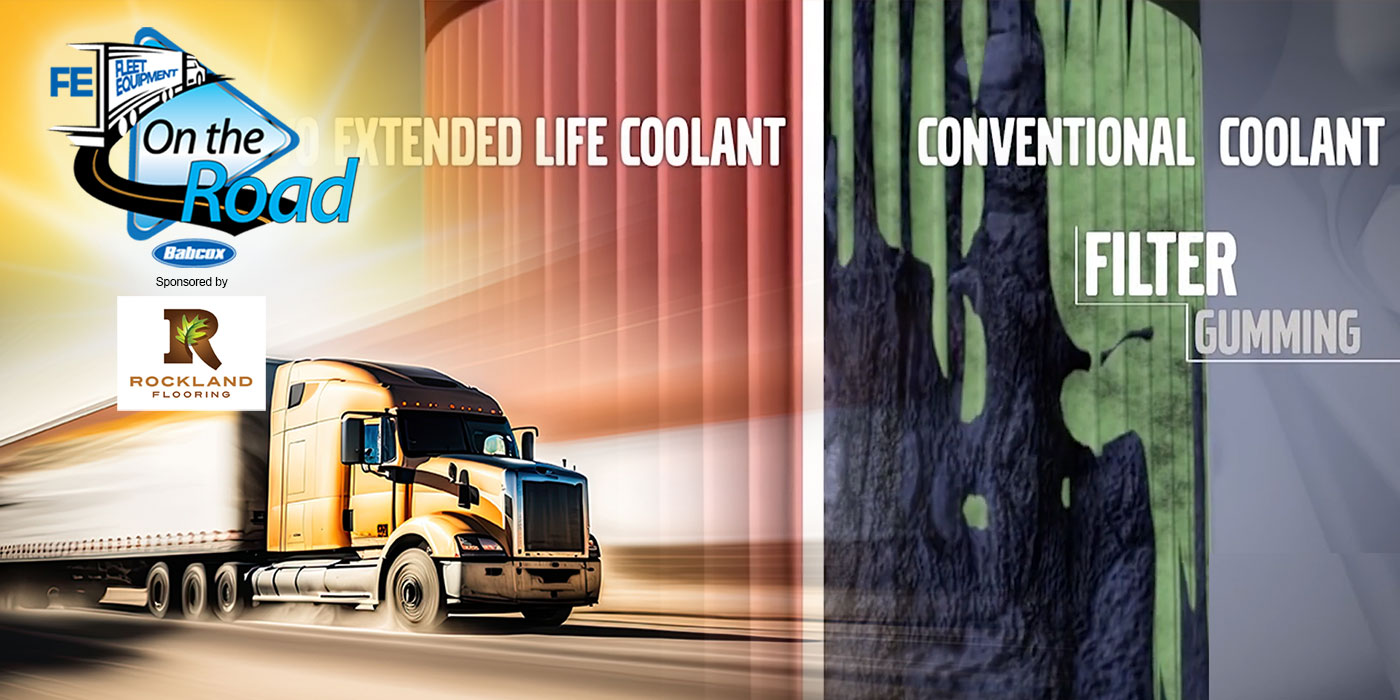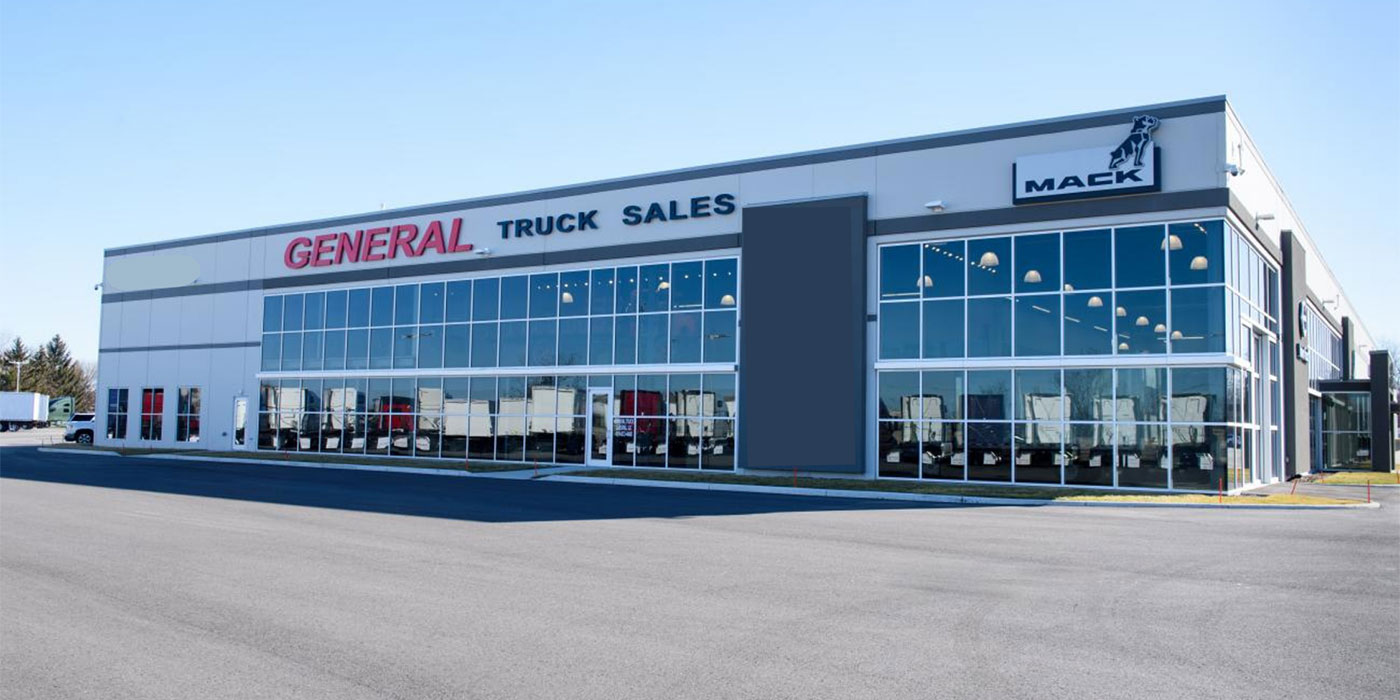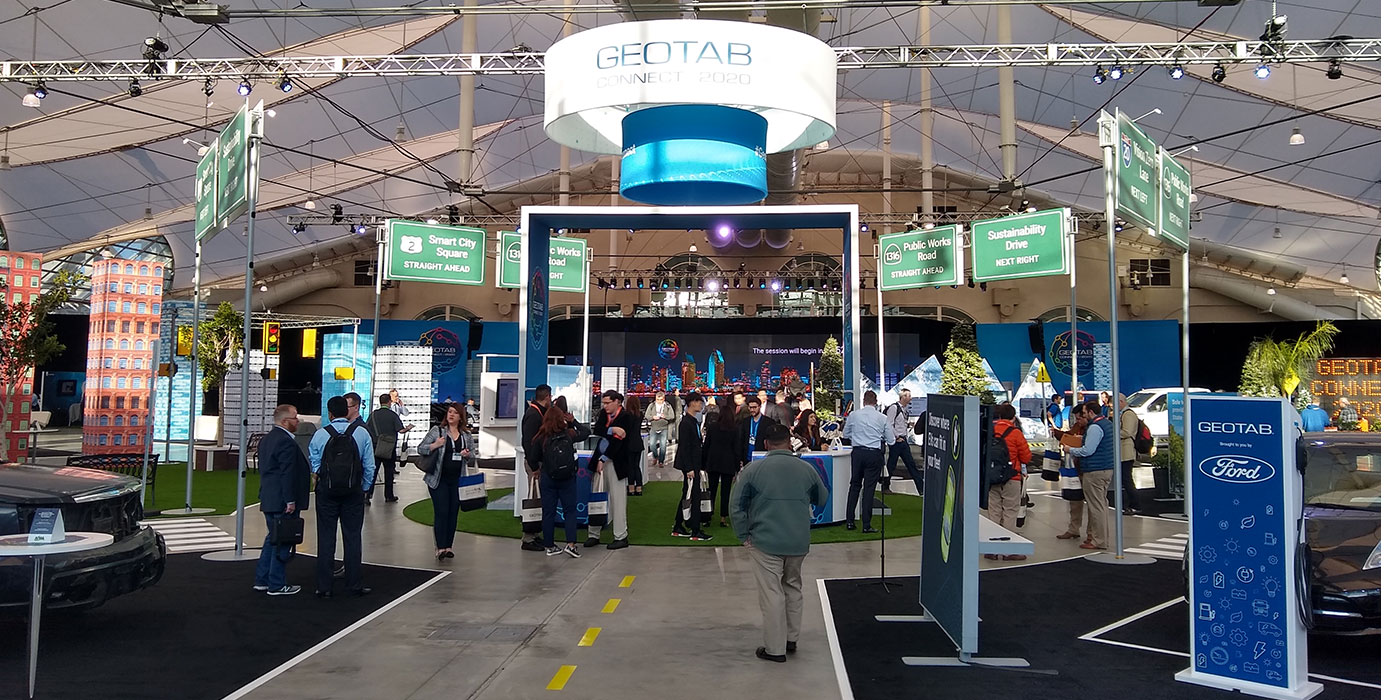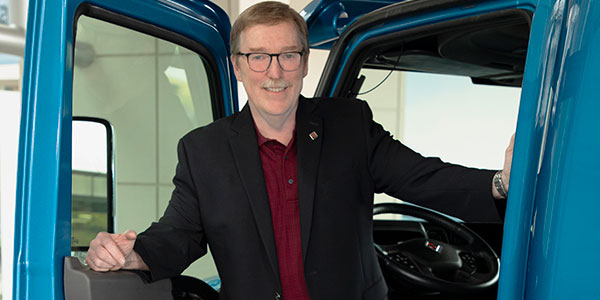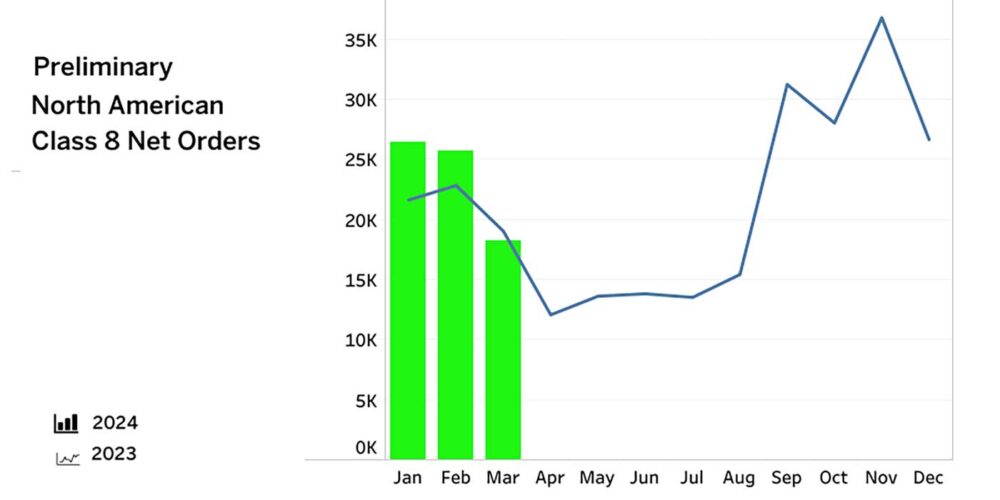How do truck OEMs develop effective aerodynamic vehicle designs to further improve fuel economy? How much more fuel efficiency can be gained by improving on today’s already highly aerodynamic vehicles? What limits aerodynamic design improvement and how might those challenges be met in the future? For answers to these questions, Fleet Equipment spoke recently to expert representatives at the industry’s Class 8 truck manufacturers.
Daimler Trucks North America
“When we develop a new design or make improvements to an existing design, aerodynamic performance is one of our top priorities,” says Matt Markstaller, manager, product validation. “Our aerodynamics staff is consulted at the conception of each design change to make sure we are headed in the right direction from the start.”
At Daimler Trucks, basic designs are first evaluated with Computational Fluid Dynamic (CFD) software. “Think of CFD as a virtual wind tunnel that we use to look at design iterations at a very early stage, “Markstaller explains. “The next step is to test and develop real prototype parts in a full-scale wind tunnel. At this point we refine details on clay models and prototype parts to further optimize their shapes. Of course, we also validate all of our aerodynamic work, along with other factors like engines, with a variety of over-the-road fuel economy tests.
“There are still efficiencies to be gained,” Markstaller continues. “We are limited today by practical constraints, such as vehicle cooling requirements, ground clearance, outside visibility and the tractor-trailer gap, but technologies and customer expectations are changing that allow us to make further aerodynamic improvements. For example, customers are beginning to accept lower ground clearance for fuel tank side fairings.”
There are also limits on aerodynamic design improvement, Markstaller notes, and that is why a vehicle’s design is so complicated aerodynamically. Factors to consider include packaging due to powertrain and cooling requirements, cab size, outside visibility, servicing and safety requirements and material constraints.
“As we learn through experience, we can influence the aerodynamic design of all aspects of vehicles,” Markstaller adds. “For example, as engines become more efficient they require less cooling so we can use smaller radiators, reduce the flow of air through the grille area and further optimize hood and body shapes. There is also work to be done beneath vehicles. With current fuel prices, we are taking another look at these areas and finding that some solutions, which have not made sense in the past, look a lot more interesting now.”
International Trucks, Navistar
“We use multiple tools in our aerodynamic design process,” says Ron Schoon, chief engineer, aerodynamics. “We combine math-based tools, such as Computational Fluid Dynamics (CFD) with physical-based tools such as wind tunnel and on-road testing to verify designs.
“There is still significant opportunity for improving the aerodynamic performance of today’s Class 8 tractor trailer combinations,” Schoon continues. “For example, we have demonstrated that aerodynamic improvements of greater than 20% are readily achievable with trailer add-on devices. Navistar has also verified highway fuel economy improvements of 10% to 15% with experimental aerodynamic trailers. Skirting along the lower sides of trailers is one opportunity, but parts need to be proven durable and have a satisfactory return on investment.”
One of Navistar’s key findings during these tests, according to Schoon, was that trailer aerodynamic devices worked far more effectively when pulled by a more aerodynamic tractor. “Every aspect of the exterior of the tractor-trailer combination must be examined as we seek to continue to reduce aerodynamic drag and improve fuel economy,” he states. “For example, the aerodynamics of the tractor and/or trailer underbody is another area of active investigation.
“Every vehicle design needs to find its balance point amongst the often competing constraints of aerodynamic performance, styling, driver environment, powertrain cooling and others,” Schoon says. “Additional factors such as cost, manufacturability and part sharing strategies also must be weighed in every design. It is an exciting process, and when we develop a new product, we want the balanced vehicle design to optimally meet the customer’s needs.”
Kenworth Truck Co.
“Our engineers pursue even greater fuel efficiency from improved aerodynamics by using Computational Fluid Dynamics (CFD), wind tunnel and technical center and real word highway testing,” says Dan Kieffer, research and development manager. “CFD allows engineers to conduct virtual aerodynamic testing by simulating a combination of real world and wind tunnel conditions. This tool enables us to evaluate different hood shapes, cab-sleeper configurations and roof fairing designs, tractor-trailer interactions, trailer modifications, and flow around all other components, and achieve a better approximation of real world results and evaluate and optimize basic truck shape.”
Kenworth also uses wind tunnel testing of 20%-scale truck models in pursuit of fuel economy advances. Tests are conducted at the University of Washington Aerodynamics Laboratory wind tunnel in Seattle. The overall objective is to identify opportunities to improve aerodynamic performance of the trucks, validate CFD simulation results, and evaluate aerodynamic properties, such as drag coefficients. Wind tunnel test programs, which typically run during one week, utilize a smoke wand to visualize airflow characteristics over a vehicle and study the aerodynamics of various body shapes and the impact of attachments and accessories such as mirrors, sun visors and cab extenders.
A third part of Kenworth’s aerodynamic testing program takes place at the PACCAR Technical Center. Fuel economy tests are regularly undertaken on the facility’s 1.6-mile, high-speed, banked oval track following practices developed by the Society of Automotive Engineers (SAE). Each test cycle covers at least 150 miles and the data and results collected are used to help confirm over-the-road fuel economy test results and to assess the performance of new designs.
Testing at the PACCAR Technical Center’s track also includes an evaluation of aerodynamic drag force measured from a set of axle-end dynamometers when moving the vehicle at a steady speed on the banked high-speed test track. This drag meter test normalizes variables such as vehicle speed, frontal area, air density, wind speed and tire rolling resistance. Results are then checked against the CFD data to ensure accurate predictions and measurements.
“We also take to the road for test runs,” Kieffer says. “This testing helps to confirm and verify results gathered from the wind tunnel, computational fluid dynamics and the test track, and helps to evaluate prototype aerodynamic enhancements to various components.”
Mack Trucks
“At Mack Trucks, “says Jerry Warmkessel, highway products marketing manager, “Computer Aided Drafting (CAD) is used for initial aerodynamic designs, which are then validated through Finite Element Analysis. Finally, the design is physically tested in a wind tunnel.”
Opportunities for aerodynamic improvement do exist, Warmkessel notes. “The engine and underhood compartment are areas where fuel economy improvement is possible,” he says. “Underhood air management is paramount due to the higher heat rejection coming from newer engines. However, the ability to cool the truck properly requires a cooling package typically larger than previous configurations, so this contributes to the limitation on hood design.
“We are constantly tweaking our products to ensure optimized aerodynamic advantages,” Warmkessel adds. “We believe that tractor aerodynamics are already highly advanced. Now as well, and especially with high fuel costs, more emphasis is being placed on the trailer in an effort to gain aerodynamic efficiency.”
Peterbilt Motors Co.
“We use tools that can address and improve the aerodynamics of a tractor-trailer, says Landon Sproull, chief engineer. “Computational Fluid Dynamics (CFD), for example, allows for the analysis of Computer-Aided Design (CAD) models before prototypes are even built. Our work also includes helping to make improvements to the University of Washington Kirsten Wind Tunnel, funded by the PACCAR Foundation, which allows 20%-scale tractor-trailer testing, and more reliable data than 10%-scale models can provide. At the same time, other steps are taken, including full-scale drag-meter testing at the PACCAR Technical Center, as well as SAE fuel efficiency testing.
“Each method is useful in its own way,” Sproull reports. “Effective aerodynamic designers use multiple methods over the course of development to ensure that the product meets expectations and that no one method has incorrectly biased a design.”
Real-world results offer the best tools for an analysis of the role aerodynamics play in fuel economy, according to Sproull. “The more testing approximates real-world conditions, the greater the accuracy,” he states. “Over many years we have developed a great deal of confidence in all these areas –– through CFD studies that replicate wind-tunnel testing and full-scale testing and on-road evaluations –– and by collecting fuel economy data from a number of fleets and using it in conjunction with a Field Reliability Analysis Program (FRAP) to make sound judgments.”
Volvo Trucks North America
“Volvo engineers use sophisticated computer-based simulation methods to develop and optimize designs and concepts,” says Michael Sorrells, lead engineer for aerodynamic design. “Half-scale models of products have undergone verification in a wind tunnel and real-world fuel economy testing followed.”
Volvo also participates in industry projects such as a recent two-year cooperative endeavor with the Department of Energy and the Truck Manufacturers Association that focused in part on addressing airflow under the vehicle and reducing the interaction between the underside of the truck and the gap between the back of the tractor and the trailer.
“With regard to the underside,” Sorrells relates, “it was thought that airflow management might only be attained through a completely smooth surface. This research showed, however, that a simple composite extension of the front bumper could prevent a lot of airflow disruption under the vehicle. A second modification developed within the project involved the addition of a deck closure between the chassis rails between the back of the cab and 5th wheel. With the further addition of currently available roof and side fairing extenders, and the installation of an air deflector that wraps around the front and sides of the trailer bogie, the four simple, economical modifications improved fuel economy by 2.3%.
“It is important to understand that the fuel savings achieved with the addition of each aerodynamic device is not cumulative,” Sorrells states. “The more aerodynamic features on a tractor, the less each contributes as a percentage of the overall savings. In addition, many other factors also affect a truck’s fuel efficiency, including tire tread depth, engine gearing, idle time, speed, weather and seasonal conditions, driver variability and others.”
Significant progress
Without a doubt, truck manufacturers have made significant progress in reducing the drag coefficient (a measure of aerodynamic efficiency of a shape) in tractors. By some estimates, today’s aerodynamic trucks on average enjoy a 20% improvement over traditionally styled trucks of just a decade ago. Regardless of any success, though, these efforts continue, and engineers believe that if drag coefficient could be reduced by another 25%, an additional 10%- to 15%-savings in fuel consumption could be achieved.
As a result of high fuel prices, the study of aerodynamics and its effects on fuel efficiency have taken on greater urgency among original equipment manufacturers of Class 8 trucks and tractors. For their part, OEMs are paying close attention to all the factors, working to find ways to continue to make real improvements to vehicle design and learning how to use technologies to enhance aerodynamics and fuel efficiency in the future.


